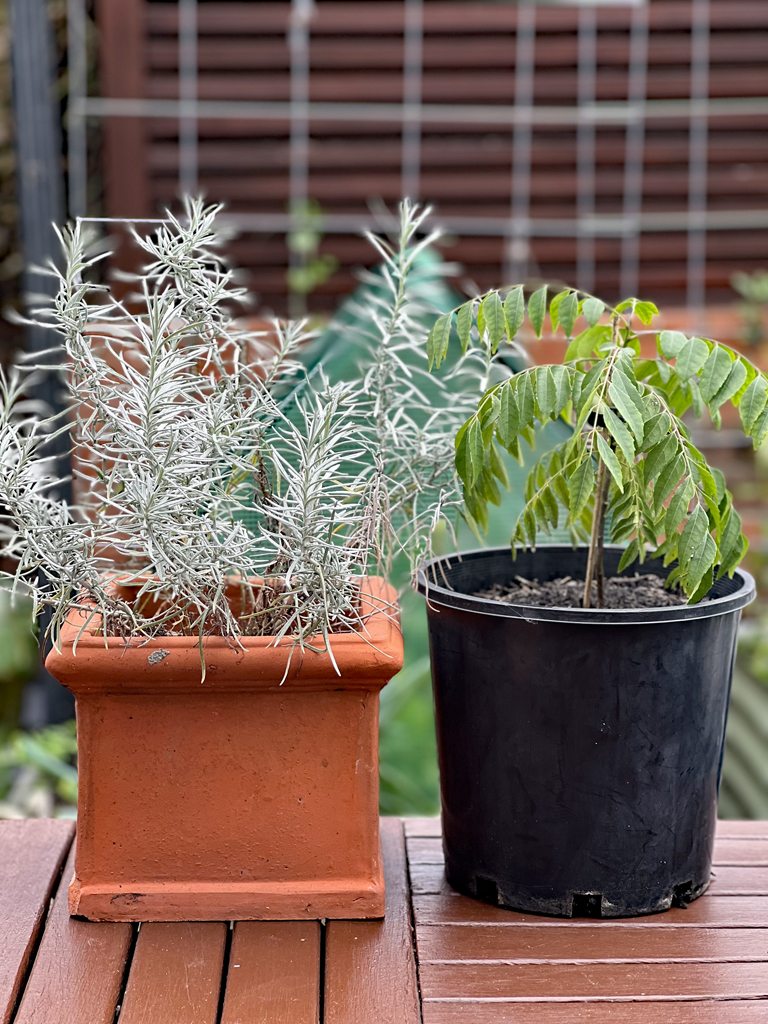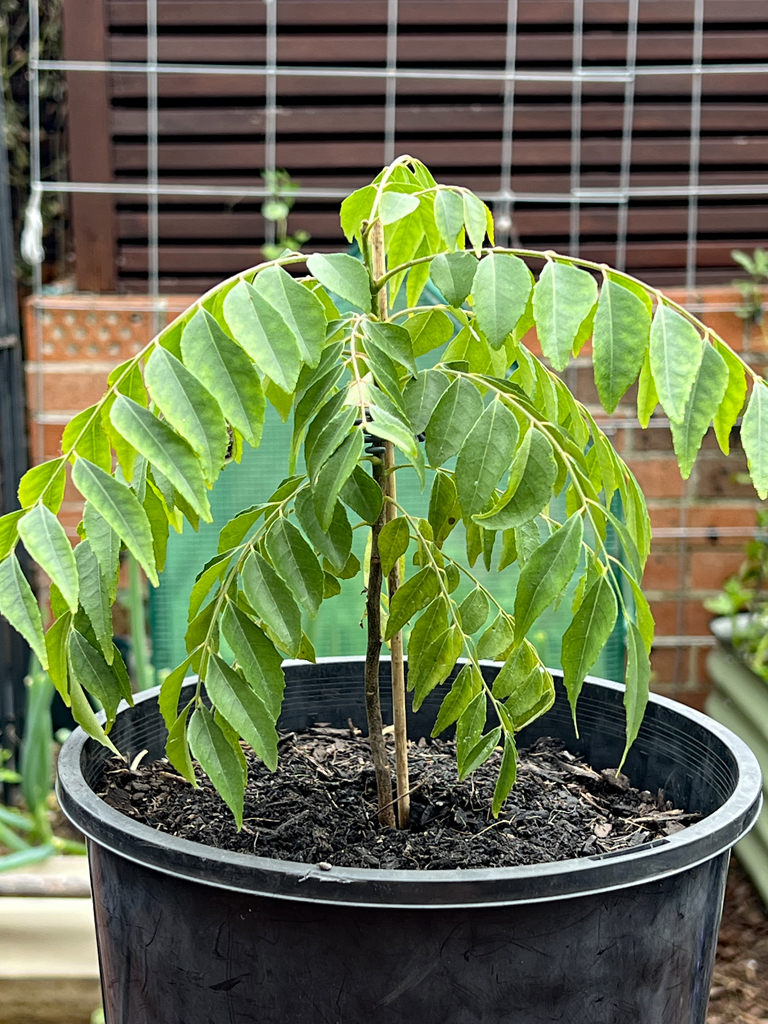Curry Plant vs Curry Tree: What’s the Difference? Have you ever bought the wrong plant and didn’t realise your error until you planted it in your garden? I certainly have.

Curry Plant vs Curry Tree – Photo © The Gourmantic Garden
In my early days of gardening, I bought what I thought to be a plant that produced curry leaves, the type used in cooking. I then discovered that I had bought a curry plant whereas I should have bought a curry tree. In this article, you’ll learn about Curry Plant vs Curry Tree and avoid making this easy mistake.
Curry Plant

Curry Plant (Helichrysum italicum)- Photo © The Gourmantic Garden
Curry plant (Helichrysum italicum) is an aromatic perennial herb with silver-grey needle-shaped leaves that emit a heady curry scent. The plant grows 60-90 cm tall and approximately 50 cm wide and rewards you in summer with yellow flowers that contrast beautifully against the silver foliage.
Equally at home in full sun or part shade, the curry plant is frost tolerant and drought tolerant though it needs to be watered well until established. While it can be grown from seed in spring after the last frost date, it is easier to buy it as a small plant.
Plant in compost rich soil, water well until established and apply liquid fertiliser at the start of the warmer season. Pruning it keeps it tidy and the cuttings can be used to propagate more plants, preferably in spring using new growth.
Although it is edible, the curry plant is better grown as an ornamental, if you can tolerate the scent. I find the aroma overbearing so it has been confined to a part of the garden where I am less likely to brush against it.
Curry Tree

Curry Tree (Murraya koenigii) – Photo © The Gourmantic Garden
Curry Tree (Murraya koenigii) also known as Bergera koenigii and Kaddi Patta is a plant that produces aromatic oval shaped leaves that are used in Indian cuisine and curries.
Favouring full sun to partial shade, the curry tree is perennial and native to tropical to sub-tropical climates but can tolerate a warm temperate climate if grown in a warm, sunny and sheltered position such as against a north facing wall.
Unlike the curry plant which is small in comparison, the curry tree grows to a height of 2 to 4 metres and just as wide. However, it is slow growing so if you can grow it in a container.
As it is better suited to warm temperate and sub-tropical climates, the advantage of growing it in a pot is that you can move it around and find a warm, sheltered and sunny location in winter.
During spring, apply a fertiliser to boost growth. These can be saved for propagation but it is much easier to grow the curry tree from a transplant. Creamy white flowers form on the plant which turn into seed. Deadhead the flowers to prevent the seeds from germination.
The curry plant requires moderate watering and the application of fertiliser in spring to boost its growth. Prune it to maintain its bushy appearance and in doing so, harvest the leaves which are used in cooking. They can be used fresh, dehydrated and stored in a sealed jar or frozen for later use.
Curry Plant vs Curry Tree: Difference At a Glance
| Curry Plant (Helichrysum italicum) | Curry Tree (Murraya koenigii) |
 Curry Plant Leaf – Photo © The Gourmantic Garden |  Curry Tree Leaf – Photo © The Gourmantic Garden |
| perennial frost tolerant aromatic silver-grey needle-shaped leaves full sun or part shade 60 to 90 cm tall and approx 50 cm wide drought tolerant once established fertilise in spring yellow flowers propagate from seed or transplant mainly ornamental | perennial suited to warm temperate and sub-tropical climates aromatic oval shaped leaves full sun to part shade 2 to 4 metres tall and wide moderate watering fertilise in spring creamy white flowers propagate from transplant preferably edible leaves used in curries and Indian cuisine |
You may also like… Betel Leaf vs Piper Betel: What’s the Difference

